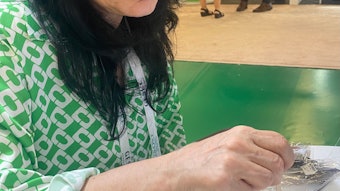In the beginning, as it often is told, we are created male or female. Thereafter, we begin noticing that there are distinct differences in the ways in which boys and girls approach the world throughout the development of their senses. It is important to understand that we all start as female, and it is only through the release of certain hormones through the endocrine system during the first trimester of gestation that the cellular composition continues its path toward the development of the person becoming a male or a female.
After birth, infants experience sensory development by receiving incoming signals and locomotor development—moving through and touching the world around them—prior to experiencing cognitive development. In other words, neonates react to the world based on their senses and ability to move through the environment. They do this before they learn to think about the consequences of their behaviors through the development of cognitions, schemata or thoughts.
The five senses that are innate in almost all species are taste, sight, touch, smell and sound. These senses lie in different lobes of the brain, and the area within each lobe contains a cortex for incoming information. Different lobes house different processing centers for incoming sensory experiences. Sensory information is any type of stimulus sent to a person as incoming signals translated into sensation information. This process is likened to the manner in which one receives different ringtones on a cell phone to differentiate between various callers. For example, a light ray, or a sound wave, is a stimulus that hits either the retina of the eye or the opening into the ear canal, and the impulse is “translated” through sensory processing. Not only do the five senses paint a picture of the world around an infant, they also are important in the formation of visual-spatial relationships, motor movement, balance, emotions and the baby’s psychological movement through their environment.
The sensorimotor stage
During the early stages of the prenatal period, as well as postnatal development, massive expansions and connections take place within the brain, resembling a sprawling city undergoing extensive street and freeway development. Every connection that is made between two different paths creates yet another connection. During this intense period of neuronal expansion, the brain stores incoming data and makes sense of all the stimuli surrounding the infant in that time and place. At this time, neonates are busy discovering relationships between their bodies and the environment. Researchers have found that newborns have relatively well-developed sensory abilities. The child relies on seeing, touching, sucking, feeling and using their senses to learn things about themselves and the environment. Child research pioneer Jean Piaget called this the “sensorimotor stage” because the early manifestations of intelligence appear from sensory perceptions and motor activities. If the infant can see it, get to it, taste it, hear it and smell it, “it” has a certain relevance to them in the manner in which they organize their internal map.
Through countless experiments, infants were shown to develop the concept of separate selves. That is, the baby realizes that the external world is not an extension of them. Infants recognize that an object can be moved by a hand—the concept of causality—and develop notions of “action produces change.” With this, physiological development, emotional development and cognitive development begin. Also instrumental is the attachment that the newborn makes to their environment in terms of new incoming information. Remember that we are born feeling, not thinking, and it is only around the age of 18 months that cognitive development begins to move the infant away from sensation and into the realm of cognition.
Trust vs. mistrust
During the period of one to 18 months, toddlers experience an emotional stage of development referred to by psychologist Erik Erikson as “trust vs. mistrust.” Erikson posed that there are eight stages of development in the course of a lifetime, with specific tasks to be mastered and goals to be obtained emotionally. During the initial stage, the toddler’s challenge is to find the world to be either a trustworthy place or a place that is not trustworthy. What happens in the brain during this and subsequent periods of development is that connections are formed and significance is given to stimuli associated with the cognitive, behavioral and emotional reaction. What many researchers are positing from early studies on child development is that brain circuitry develops at an exponential rate during these formative years. The stimuli that the toddler/infant is exposed to form some lasting impression somewhere in the brain. Of primary significance during this fertile period of psychosocial evolution are the impressions left upon a “blank slate,” whereby the developing person forms their personal relationship with their environmental world around them.
Young girls develop differently than young boys do, and the same is true of young adolescents of each sex. Because of the interplay of hormonal releases and sex characteristics, there is a difference in the amount of “sense making” that boys and girls experience. Generally speaking, the brain of a young girl develops with the natural DNA blueprint that has been handed to her from the numerous generations in her family that came before her; the same is true with boys. The major difference in the developing brain takes place through the way in which neural connections are formed, as well as the strength of these connections, which are determined by environmental factors such as positive or negative reinforcement and psychosocial stressors.
Researchers today in the field of child development are very comfortable stating that at these very early stages of development, little boys and little girls travel on different emotional, cognitive, intrapersonal, interpersonal and social paths. The “wires” that have been soldered together in their brains create meaningful explanations as to why girls have a tendency to take numerous variables into consideration when involved in decision-making, whereas boys tend to use far fewer information-seeking skills to render a decision.
Part II of this series will explore how it is that sociological and stereotypical learning theories further solidify the divergent brain structures, as well as the processing of information that impacts an individual’s sense of self in the world. The final part of this series will discuss how these early developmental stages and socio-environmental processes form the foundation for a person’s visual, kinesthetic and emotional responses to the behaviors of themselves and others. Also discussed will be the expected outcome of a person engaging in a certain behavior and how this potentially can aid business owners in increasing their profit centers.










